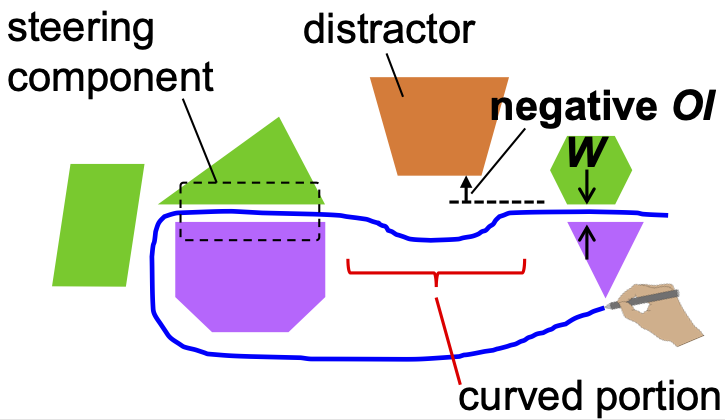
Necessary and Unnecessary Obstacle Avoidance Movements Affect User Behaviors in Crossing Operations Article
Shota Yamanaka, Wolfgang Stuerzlinger
Abstract:
The "crossing time" to pass between objects in lassoing tasks is predicted by Fitts' law. When an unwanted object, or obstacle, intrudes into the user's path, users curve the stroke to avoid hitting that obstacle. We empirically show that, in the presence of an obstacle, modified Fitts models for pointing with obstacle avoidance can significantly improve the prediction accuracy of movement time compared with standard Fitts' law. Yet, we also found that when an object is (only) close to the crossing path, i.e., a distractor, users still curve their stroke, even though the object does not intrude. We tested the effects of distractor proximity and length. While the crossing motion is modified by a nearby distractor, our results also identify that overall its effect on crossing times was small, and thus Fitts' law can still be applied safely with distractors.
